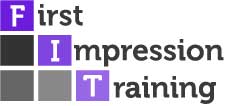“OK, calm down please Sir…. I’m new here…. my computer is on a go slow this morning…. and I don’t think I can sort that problem out anyway… I’m going to have to transfer you to another department…. so I’m just going to put you on hold…. if you can just bear with me…sorry about this, all their lines are busy unfortunately…can you call back later?”
And b-r-e-a-t-h-e. Loosen your grip on the telephone and stop imagining yourself strangling the customer service rep who just told you to calm down, when all you want to do is spontaneously combust with rage at their total and utter incompetence.
Have you ever called a company and felt mad after speaking to them? Ever dealt with the real life ‘computer says no’ lady from the TV show Little Britain? Had to listen to a (dare I say) automated-sounding call centre agent who clearly would rather be anywhere else other than at their workstation serving you right now?
It could be just the odd word or phrase they used (like any or all of the above examples) or a tone of voice that caused your temperature to rise, or made you feel insignificant or under-valued or worse still, like you were a real interruption to their day, but the fact is – we’ve all experienced this, to one extent or another when we’ve engaged with frontline service operations, haven’t we? God forbid, your customers would ever experience this type of banal service on your frontline ay!?
So what type of conversations are you and your team having with your customers? How are you making your customers feel when they interact with those Brand Ambassadors of yours – whether that’s by ‘phone, face to face or through the written word? What are you doing to ensure you show up and stand out in your field, so that you’re perceived as one of those exemplary service providers in your sector?
Here’s a few super shocking stats for you to consider:
• Only 37% of businesses get ‘Good’ or ‘Excellent’ customer service ratings…oh dear!
• Meaning 63% of them get ‘OK’, ‘Poor’ or ‘Very Poor’…..gulp!
• 89% of customers move to a competitor following bad service….crumbs!
• 60% of customers will pay more just for better customer service….say what!?
• 86% of those customers would in fact pay 25% more for that better service….WOW!
Source: Forrester Research
So now we know the scary facts and stats, let’s consider some of the annoying things customers may be hearing (and us too, as customers) that generate these poor ratings and miserable feelings about the service they’ve received, when they hear those frontline staff spout those typical, scripted responses.
We know that ‘words are the vessels on which our thoughts are carried’, so if we’re being spoken to in a bland, neutral, couldn’t-care-less manner, then it’s highly likely that Brand Ambassador is not fully engaged with us or with the brand they’re representing, agreed?
Now I feel sure none of MY readers would ever have cause for concern about what’s coming next, but just in case…..
Take a deep breath, get the incense sticks lit, have a swig of your favourite tipple to calm the nerves and brace yourself… here’s the 9 most irritating, empty, annoying responses we can ever spout to a customer when we service them on a frontline (you’re not guilty of any of these…..are you?)
1. ‘Calm down Sir’
Remember that Michael Winner advert where he said, “Calm down dear”? How condescending was he – and how condescending are we when we tell a customer to calm down. It can sometimes come across as “come on, you’re being stupid / getting in a tizzy for no reason / being a drama queen”.
It’s simply not appropriate to tell people how they should feel. We all have a right to an opinion, a viewpoint, an emotion, a feeling – especially when things have gone wrong for us!
Just Google ‘Angry BT Caller’ to hear a guy really losing it, when BT call him. Warning: it’s very sweary!
So don’t be a Michael Winner ( Dear)…
Try instead: The Five A’s Model
Acknowledge the issue e.g. “Mr Smith, I can appreciate how frustrating this is”
Apologise e.g. “and on behalf of the Accounts team, I’m so sorry you’ve had to call in again”
Accept responsibility e.g. “I’m going to personally look into this and ensure your concern is investigated by our Accounts team, so that we get this resolved for you”
Adjust the situation e.g. “they will be able to check the account and update the records, so that both your accounts balance, and you’ll then receive a revised statement with a new password, so you can start using the card again”
Assure the customer e.g. “thank you for giving us the opportunity to put things right and let me assure you, we’ll do everything we can to get this resolved for you within the next 48 hours”
Better words to use than ‘calm down’ include:
• “I can imagine that’s upsetting for you”
• “I can totally appreciate why you feel that way”
• “I understand you’re disappointed / frustrated / angry and you have every right to feel like that / say that“
2. ‘It’s company policy I’m afraid / sorry, but that’s our policy’
Basically translated into “we’ve run out of lame excuses that don’t apply, so we’re going to shut you down cold”.
It’s such a lame excuse for explaining the reason why a particular practice is in place. Customers don’t care about your company policies or internal procedures. You sound like a robot that is spouting from a script, devoid of emotion or care, with no chance of helping the customer.
Try instead: (If you have to say ‘policy’) using the word ‘usual’ or ‘normal’ when citing company practice e.g. “our usual policy is to ……’ or “It’s a normal part of our policy to…”
3. ‘As I’ve already said… / as I was trying to explain…’
It’s the kind of phrase you’d use in an argument with your partner… “as I’ve already said Brian, if you’d done the washing, we wouldn’t have been late”.
It’s like saying “I’ve said this once when I was right… I’m still right… and I’ll say it again.”
Equally annoying to the ear are phrases such as:
• “put simply….”
• “obviously…”
• “as per….”
• “well if you’ll listen, I’ll explain…”
• “listen to me…”
• “excuse me, I’m trying to tell you…”
Try instead: Actively listening to the customer and use verbal nods and empathetic noises to prove that you’re working hard to get on the customer’s wavelength and understand what and why they don’t appear to be ‘getting it.’
Empathy is one of the smartest tools in a frontliner’s toolkit – and equally smart is to take responsibility and ownership for the customer not understanding what you’re telling them, so it looks like it’s your ‘fault’ that you’re having to repeat yourself or explain something yet another way, not theirs! e.g.
• “perhaps I’m not explaining myself properly Mr Smith….. (repeat)”
• “I think I may not have explained things clearly enough Mr Smith…(repeat)”
• “I’m not sure I made that point clear to you Mr Smith, let me explain (repeat)”
4. ‘I don’t deal with this…’ / ‘you’ve come through to the wrong department’
That’s like going to visit your doctor with sight problems and her shrugging her shoulders and saying “I don’t do eyes”. Your GP wouldn’t do that. They would take a look and then suggest you visit an optician and possibly refer you.
Not claiming responsibility is also known as ‘customer shuffling’ where you move your customer around from pillar to post. You have a responsibility, just like that GP, to point people in the right direction, letting them know the benefit of being transferred or recommended to the right people (seeing the right specialist, to continue the GP scenario)
Try instead: letting the customer know the benefit of being transferred or having to call another number or having to hold the line when they come through to you and you’re not ‘the man that can’!
• “So that you’re speaking to the best people who can help you, let me transfer you to our xyz team…”
• “So that we can get this resolved for you immediately, let me give you the direct dial no. for our xyz team”
• “so that you’ve got the most up-to-date information about that, let me put you through to my colleague who deals with that…”
5. ‘Leave it with me, I’ll get back to you as soon as I can’
When? The next half hour? This afternoon? Today? This week? This month? In my lifetime? This is frustrating for customers, they want to know when things are going to happen.
Try instead: Following the UPOD Rule – Under Promise so that you Over Deliver!
Set a realistic timeframe that you will get back to the customer within (rather than a specific time, such as ‘in 5 mins’ or ‘straightaway’ or a loose time, such as ‘soon as I can’ ‘quickly as possible’).
Instead use the words ‘within…’, ‘before..’ or ‘by…’ to better manage customer expectations and even if the situation is not resolved by the timeframe given, always ensure you call the customer back within that agreed timeframe, with an update on the situation and likely time the issue or enquiry will be resolved.
6. ‘My computer is on a go slow’ / ‘our systems are down at the moment’
Well your customer isn’t on a go slow and they don’t really want to be waiting for your rubbish IT system to be catching up with them! We all know that computers can freeze up now and again, but don’t admit it to the customer. It doesn’t instil confidence in your systems and frustrates them with time issues. It can also sound like you’re moaning about the company’s systems, which serves no purpose at all.
Try instead: ‘Thank you for your patience, I’m just locating your details now…’ or ‘so that I can access your details, can you tell me a bit more about….’
7. ‘Unfortunately.. I’m afraid that.. I’m ever so sorry but.. the computer says NO!’
I totally get that, from time to time, we have to deliver a tad of ‘bad news’ to a customer and I also get that, more often than not, this is a difficult conversation we have to have – especially if that customer (as well as the conversation), is difficult!
Our challenge is that, when we’re having to deliver a negative message, it is perfectly natural to use an array of negative language (“unfortunately.., I’m afraid.., I’m ever so sorry but…’) yet all this does is plant the seed of negativity and doubt in the customer’s mind about exactly what we’re going to say next!
And you and I know exactly what’s coming next when we hear those fateful “neggie” words, don’t we!?
Try instead: focusing on the ‘good news’ before focusing on the ‘bad news’ and or talk about what you CAN do before you talk about what you CAN’T do, so that you put your customer in ‘positive mode’ first, so that the negative news can land a little easier on the ear! e.g.
• “I can certainly change your payment date from 1st of next month Mr Smith, although the payment run for this month has already been completed”
• “I can certainly check availability for next Thursday for you, although we are fully booked for this week Mr Smith”
• “Yes, I can certainly get this actioned for you, although it will be by close of play tomorrow now as the cut-off time is 4pm”
8. ‘Bear with me a moment… / ‘I’ll just pop you on hold’
Customers hate to be put on hold… not least because they know the likely awful hold music they’re going to be subjected to! If you do need to keep a customer holding or actually put them on hold then make sure you let them know what’s in it for them i.e. the benefit to them for holding the line, before you actually put them on hold.
Try instead:
• “So that I can get this resolved for you Mr Smith, I’m just going to check that with my colleague – are you happy to hold for a moment while I do that?”
• “In order for me to action your request, I’ll need to set up the payment screen, so I’ll just be a moment while I do that – is that OK with you?”
• “So that I’m giving you the right information, let me double check that with my Manager – are you OK to hold for a moment while I do that?”
It’s always a good idea to:
• Explain the reason you’re putting the customer on hold and what you’ll be doing
• Check that it’s OK to place the customer on hold whilst you work on the issue / enquiry
• Give an estimate of time they’ll be on hold
• Double check/take down their phone number in case you’re cut off
• If it’s taking longer, check back in frequently and thank the customer for their patience
• When you get back, thank the customer for holding and if necessary, apologise for the wait.
9. ‘Is there anything else I can help you with?’
There it is. Right there. The most commonly used phrase in the call centre environment. We’ve all said it. We’ve all heard it (hundreds of times when we, as customers, telephone into a ‘typical’ call centre) and it’s the most scripted, and therefore, most insincere phrase used in business today!
Having said that, it is of course, really good customer service to check that the customer has everything they need from us before we end the call. It’s just that the question must be asked in a way that makes us sound like we really truly DO want to provide any further help or advice if required and more importantly, that we really truly DO want to ensure the customer is totally satisfied and happy about their experience with us today!
Try instead: asking the ‘anything else?’ question in a way that relates specifically to the conversation you’ve been having with the customer e.g.
• Do you have any other questions regarding xyz Mr Smith?
• Is there anything else you’d like me to clarify for you Mr Smith?
• Are you happy you have everything you need from me Mr Smith?
• Would you like me to check anything else regarding your xyz today Mr Smith?
• Do you need any other information about xyz Mr Smith?
We all know that most of this ‘call centre talk’ is spoken in complete innocence. I’m certain these 9 most commonly used phrases are not said with direct intent to frustrate, anger or upset a customer – although they can, and they do, and when they’re taken the wrong way, the call, and the customer, and their experience can all end up heading in the wrong direction…spiralling downwards.
As we always say, It ‘aint rocket science folks! Follow the KISS principle (Keep It Simple and Straightforward) and avoid that typical call centre talk, so that you show up and stand out from the others in your field…or as Marketing Guru Seth Godin would say…become a Purple Cow!
Until next time, keep FIT!


















